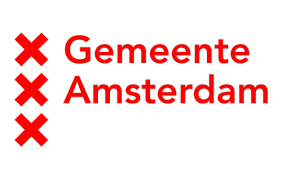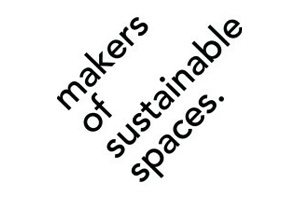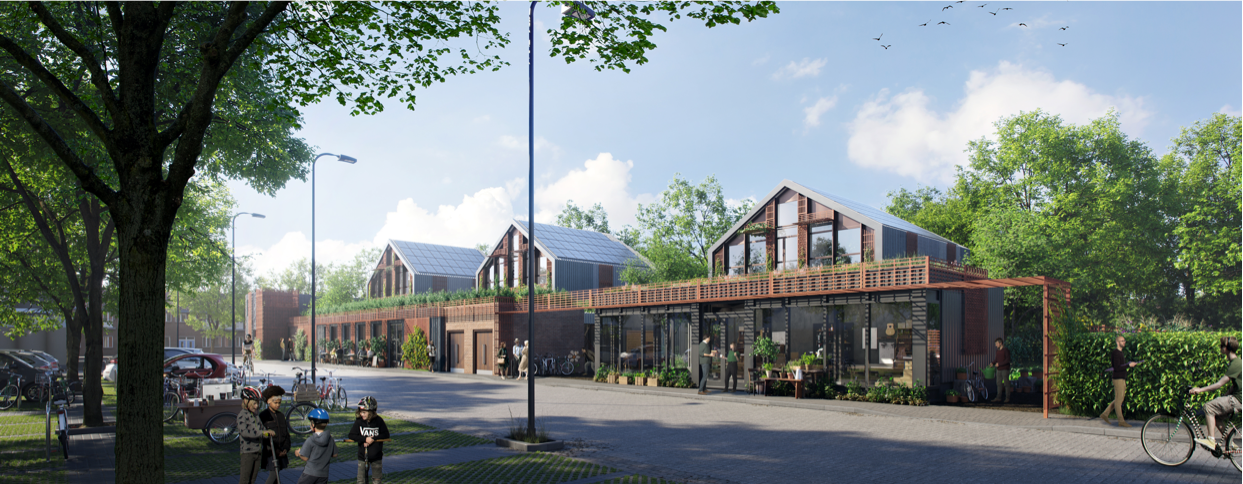

Netherlands
Let's build inclusive and circular neighborhoods together!
Photo credits: Urban Tree Village
The promise of circular neighborhood
Cities are growing hubs of natural resource consumption and Co2 emissions, and the challenges are recognized in both California and The Netherlands. These forward-thinking regions are ideal partners to collaborate on tackling climate challenges. In 2020, they signed an MoU to create a Circular and Regenerative Economy. In 2022, the Circular Neighbourhood Cluster was established to facilitate ongoing collaboration between Dutch and Californian cities and companies. Together, they aim to accelerate the journey toward circularity and regeneration, achieving emission neutrality, enhancing liveability, and protecting the environment. Join us in this transformative effort!

The immediate positive impact of a circular neighborhood
 Community building
Community building
 Efficient (re)use of resources
Efficient (re)use of resources
 Healthy living environment
Healthy living environment
 Smart water management
Smart water management
 Reduced waste
Reduced waste
The Circular Neighborhood Cluster works with partners on:
Circular Neighborhood
Solutions
Design
PPP
Circular neighborhoods are designed to minimize waste and promote efficient resource use, with self-sufficiency and low environmental impact in mind. They achieve this through sustainable materials, energy-efficient technologies, sustainable transportation, green spaces, and waste reduction strategies. The goal is to create a sustainable, resilient living environment for residents and contribute to a more equitable society.
Circular economy principles alleviate the pressure on natural resources. As urban societies develop and populations grow, so will demand. In order to maintain sustainable systems, we need to switch to renewable and reusable sources.
Let us help you to design your (digital) circular green neighborhood of the future.
Up to three quarters of global resources are consumed by urban activities and they account for 70% of global greenhouse gas emissions. Addressing this requires a paradigm shift in which governments, knowledge centers, businesses and residents come together. Only when all stakeholders join hands in an inclusive process will circular systems reverse this trend. Work with the cluster on public private partnerships (PPP), circular procurement and community building.
Impact Numbers
The percentage of re-used materials used the Boschgaard project (build by Superuse)…
84%
The reduction of CO2 emission compared to regular building standards in the Boschgaard project…
70%
The percentage of bio-based or upcycled materials used in Space & Matter’s most current project SAMPLE…
80%
The amount of drinking- and waste water saved by using water recycling technology in Hydraloop systems used in the Boskoop project…
Up to 45%
The City of Amsterdam’s goal to decrease in resources in 2030…
50%
 City of Amsterdam
City of Amsterdam
 Hydraloop
Hydraloop
 Makers of Sustainable Spaces (MOSS)
Makers of Sustainable Spaces (MOSS)
 Rebel Group
Rebel Group
 Serendipity
Serendipity
 Space&Matter
Space&Matter
 Superuse Studios
Superuse Studios
 VERSES
VERSES
 Wavin
Wavin
